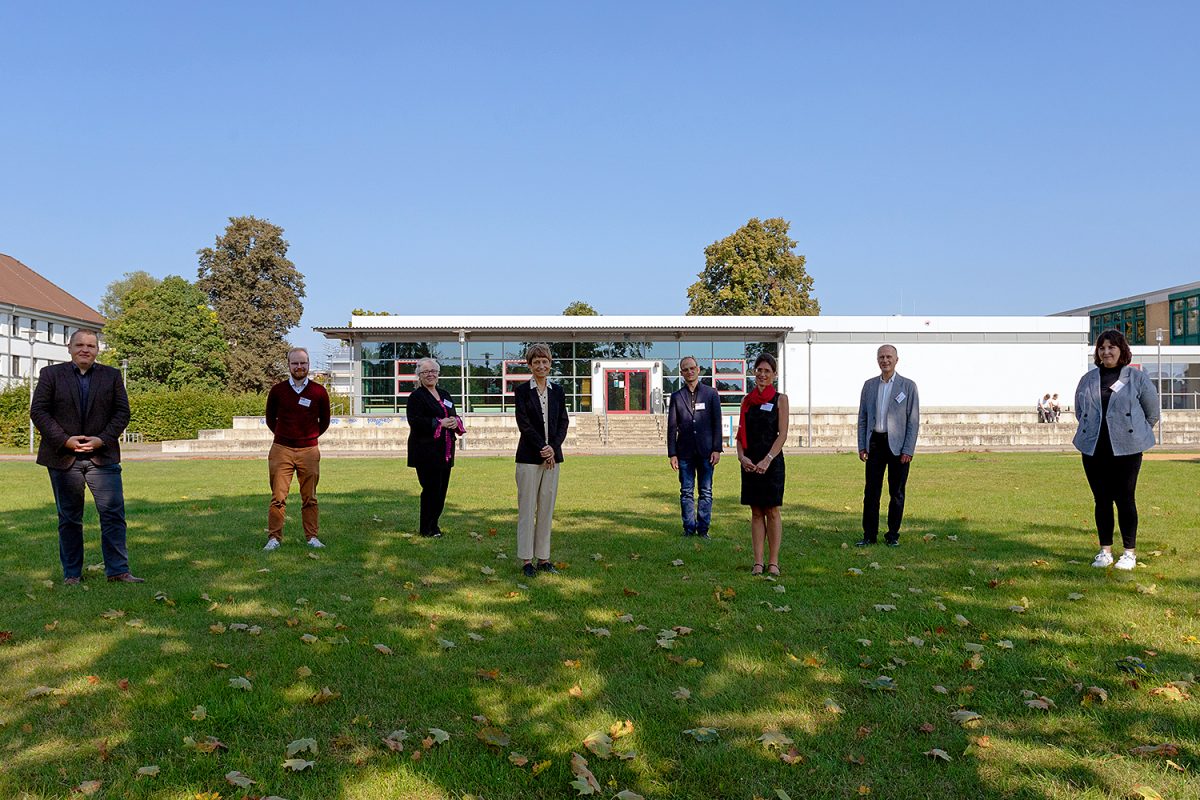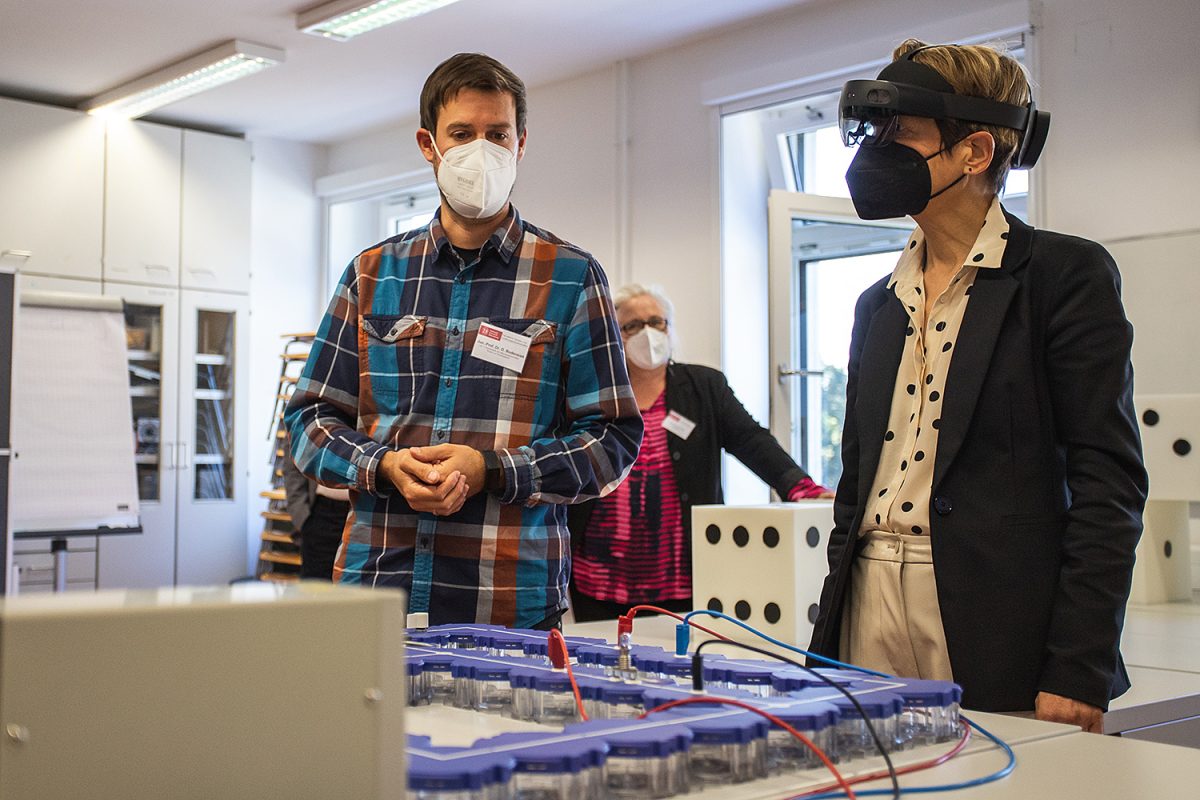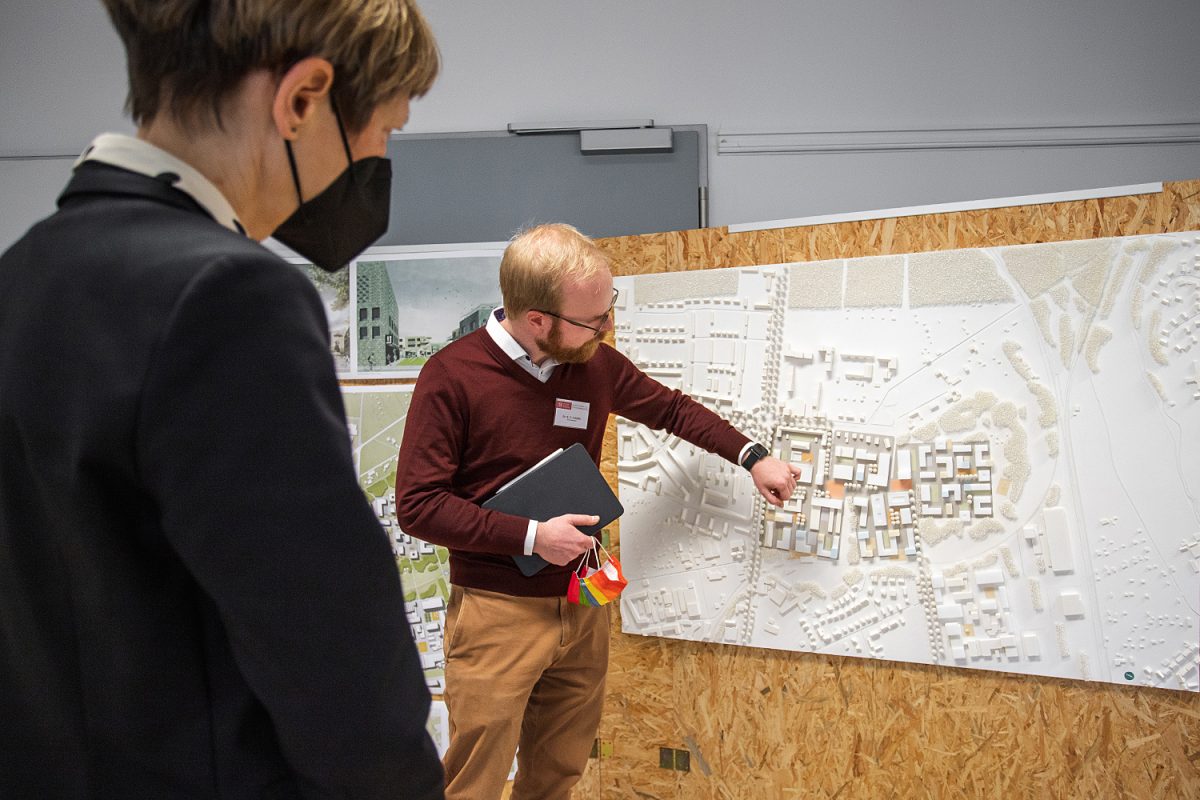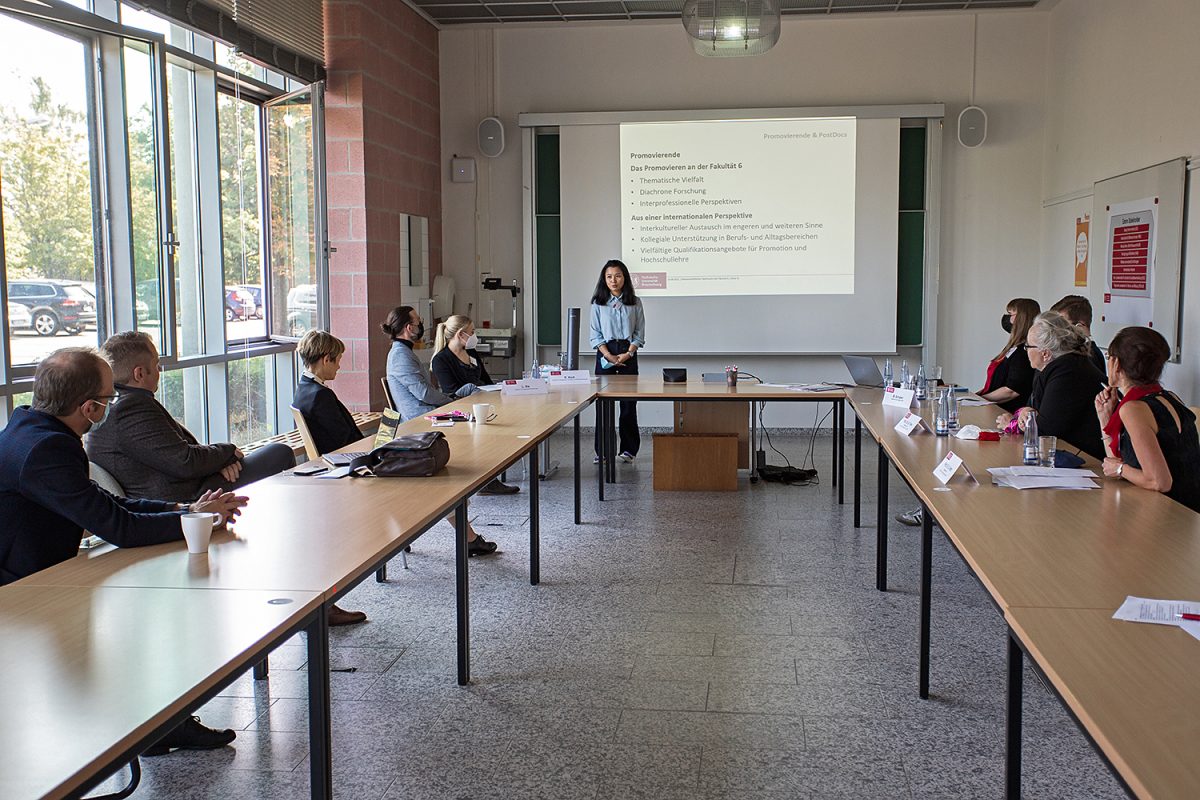Spotlight: A visit to Faculty 6 – The Future of Learning Topics and highlights of the President’s schedule
Bright sunshine at the North Campus: On September 15 my last (but not least) faculty tour took me to the Faculty of Humanities and Education. No large-scale equipment awaited me here, but an exciting exchange about research and teaching with professors, postdocs, PhD candidates and students, who presented the faculty with its common “medium”, the written and spoken word, as Dean Professor Stefanie Hartz said in her warm welcome. However, the work of the members of the faculty is not at all technology-free: I was allowed to take an exciting virtual look into the digitally supported future of teaching.
TU Braunschweig is strong in training future teachers. The Dean of Studies, Professor Christian Kehrt, gave me an overview of the diverse spectrum of our teacher training programs – from English and German Studies to Sports and Music to Physics and Biology. Due to the wide range of subjects, the faculty is not only very well connected to several other faculties of TU Braunschweig but also with the Georg Eckert Institute for International Textbook Research, the Herzog Anton Ulrich Museum (HAUM) and the Braunschweig University of Art (HBK), with a cooperation network that makes it possible to study performing arts, among other things. I am particularly pleased that the faculty will offer a combination of STEM subjects such as chemistry, physics and math with art education. This is a fantastic and very timely development that I will be very happy to support! The demand is enormous.
The way in which the scientists here are networked and work across disciplines and faculties is also made clear by the Master’s programs Culture of the Techno-scientific World and Organization, Governance, Education, the Junior Research Group “Communicating Scientists: Challenges, Competencies, Contexts (fourC)”, as well as two new impressive research initiatives that are currently receiving Seed-Money from the Core Research Area “Future City”. In the project “Rest and Resource – Chrono-Topographies of Waste” (Prof. Franziska Neumann), historians, scientists from the Institute for English and American Studies and researchers from the field of water morphology are working together, and in the initiative “Social Inequality and the City” (Prof. Stefanie Hartz), experts from the fields of education, sociology and architecture are collaborating on important topics of our time. The faculty is also involved with the QuantumFrontiers MasterClasses for students and the research club changING, which offers exciting insights into the aviation research in our Cluster of Excellence SE²A, reported Professor Rainer Müller.
Before we went on the tour around the North Campus, Dr. Konrad Schäfer, Managing Director of Faculty 6, showed me the urban planning ideas for the CoLiving Campus. In the future, the project could link research and teaching, working and living, leisure and culture, and bring university and city closer together, thus also making the campus more lively.
The future was also the focus at the Institute for Specialized Didactics of Natural Sciences. Equipped with mixed reality glasses, I was able to see for myself what new learning opportunities augmented and virtual reality offer. For this purpose, physics Junior Professor Oliver Bodensiek had set up an electric circuit on which the students will be able to solve various problems. I’m sure they’ll be very enthusiastic about this kind of learning.
Since digital competencies are becoming increasingly important, the project “DiBS – Digital Competencies for Teacher Education at TU Braunschweig” aims to systematically anchor them in teacher education. This is an important project for the training of future teachers.
The importance of school and classroom research is also very prominent at the Research Institute of Teacher Education, which coordinates and promotes these activities. With the Competence Center for Teacher Training, Professor Jan Standke presented an important component in the qualification of teachers in Lower Saxony. As one of twelve centers in the state, it is responsible for 370 schools and around 10,500 teachers. I was impressed by the fact that the program has even expanded during the pandemic.
Before the end of the tour, I was given the opportunity to exchange ideas with a small group of students, doctoral candidates and postdocs, who presented the summaries of campus “voices” that they had collected from their fellow peers beforehand. A great idea! I was impressed that the young scientists emphasized the importance of interdisciplinary work and the warm and personal atmosphere of the faculty.
I am very much looking forward to further discussions and the stronger integration of the social science and humanities subjects in projects that answer the key questions of the future. Many thanks to Professor Stefanie Hartz, Professor Barbara Thies, Professor Christian Kehrt and Dr. Konrad Schäfer as well as all other participants of the faculty for the organization and the interesting insights.




